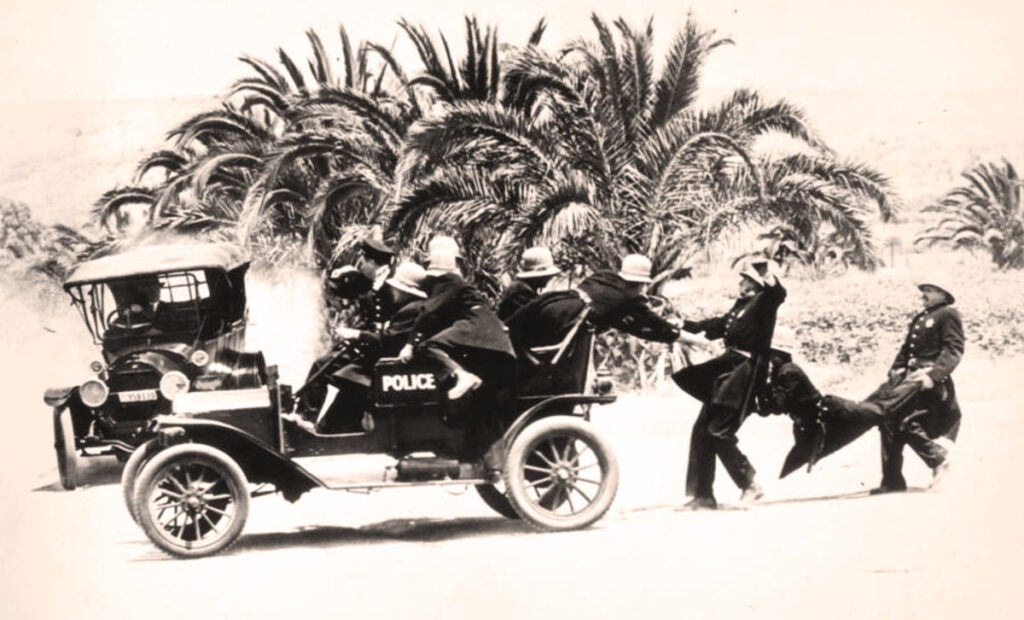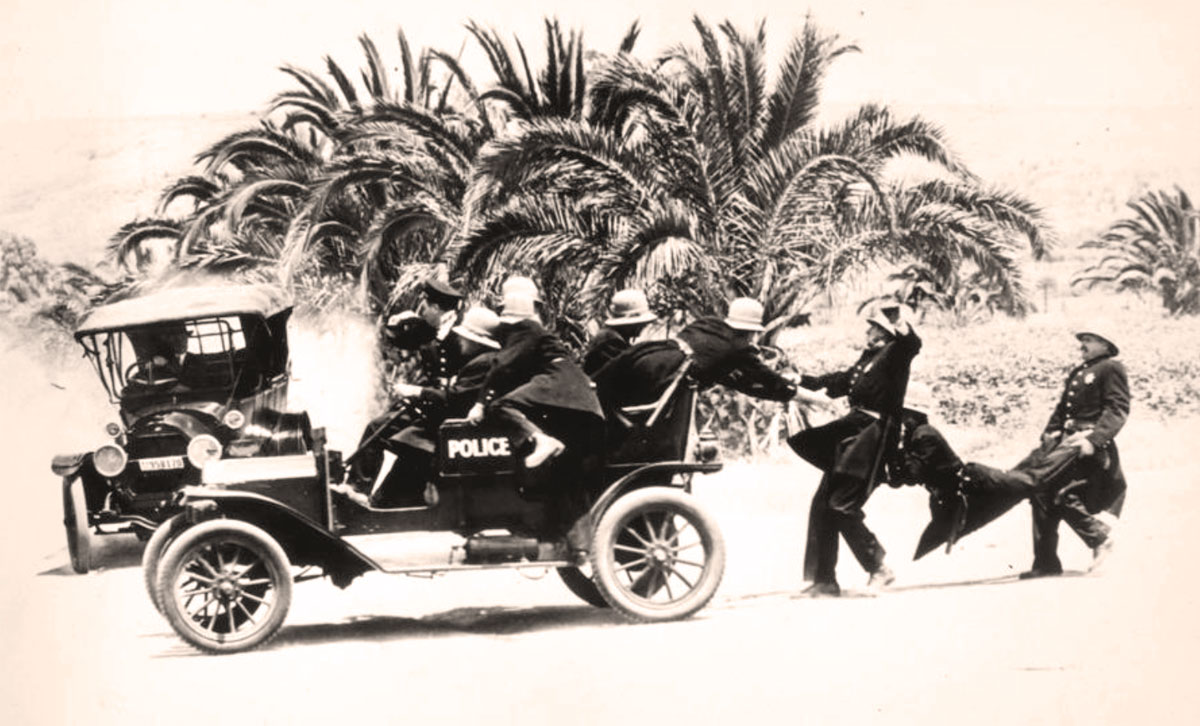Yes, sometimes silent films are run too fast, faster than they ought to be. Some of them, anyway. For a long time, there weren’t any options about this, and this either became something fans got accustomed to or became a stereotype about silent movies that could be off-putting.
The projection rate at which sound film is run was locked in 1925 or 1926, at 90 feet per minute, or 24 frames per second. Once talking pictures took over from silents, projectors no longer had rheostats on them for adjusting projection speed up or down as there’d been before 1929. This was the case both for theatrical 35mm projectors as well as for 16mm ones used in schools, homes, and telecine equipment used by television stations to broadcast motion picture film.
Silent film was seen — when it was seen — at this one frame rate starting in the 1930s. This generated the “herky-jerky” stereotype of silent film that people think of. Not all silent movies, but the films made in the 1910s and maybe early 1920s have this too-much-espresso look to them.
A lot of people, collectors and archives alike, think of 18 fps as “silent speed” and that it applies to all silent films. I have a theory about where this term came from, and I’ll cover that in another post.
Having had the opportunity to accompany silent films at MoMA (the Museum of Modern Art) in NYC for many years, I discovered that their projectors were variable-speed, and that film shown in their cinemas could be run at a variety of speeds. Not just the either/or of 24 fps or 18. I had a lot of chances to see which speeds worked best for films from different years, and also gradually got to have input on the running speed of a film I was going to accompany.
What I noticed over years of doing shows is that silent films from different parts of the silent era look and seem “fine” when run at 24 fps, and some do not. I realized two things — one that I couldn’t quite explain, and one that I could. The first is that it seemed that films from the early ‘teens held up best at a rate of 18 fps, from the mid-‘teens at a range from 18-21, in the early ‘20s at 20-22, and then from around 1923 on 24 fps seemed fine. The further back you went, the slower the projection speed needed to be (or vice versa).

By “looked fine” I mean that there is a certain amount of decoding we in the audience are required to do in viewing the films. What I noticed with films from the 1910s is that when they were run at a more hospitable speed I noticed that a lot of facial expression and reactions became visible and decodable. When over-speeding a film from the 1910s these reactions – information we’re being given, and need to take in – get erased, and the motivation or reason a character onscreen does something can get erased.
It zips by, leaving only the physical action the decision has precipitated. Leaving the impression of people “running around like the Keystone Kops”. For decades, the only way to see Keystone shorts from 1914-1916 were in editions shown on TV run at 24 fps. I’ve had many opportunities to watch Keystone shorts projected at 20 or 21 fps and have noticed that at that rate the slapstick still lands, but the character’s decision to throw those bricks (it’s always bricks, and rarely pies) is decodable. Not like in an O’Neill play, but just enough so the films don’t play like a Punch and Judy puppet show.
The realization that there was this gradual shift in silent films’ being less or more decodable from 1910-1929 if you watch all of them at one projection speed was what set me off on the next part of my exploration of filming and projection speeds in Silent Film.
The first post in this series is here.
The previous post (#41) to this one is here.
